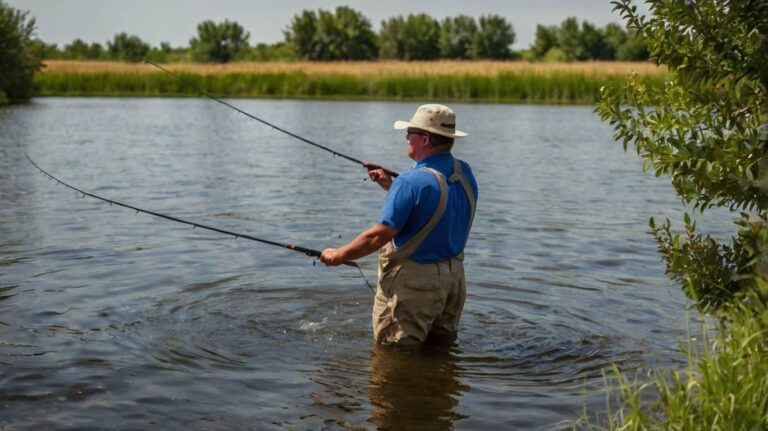Skip the crowded parks; these hidden Midwest caves are untouched, affordable, and unforgettable. Perfect for your next road trip adventure.
Why Skip the Tourist Traps?
When most people think of travel, the Midwest rarely tops the list, especially not for cave adventures. But beyond the well-known show caves and national parks lie secret, under-the-radar grottos that locals whisper about but rarely share. And that’s exactly why you should go.
These hidden gems offer budget-friendly outdoor exploration, fewer crowds, and that rare thrill of discovering something truly off-the-map.
3 Hidden Midwest Caves Worth the Detour
1. Maquoketa Caves State Park (Iowa)
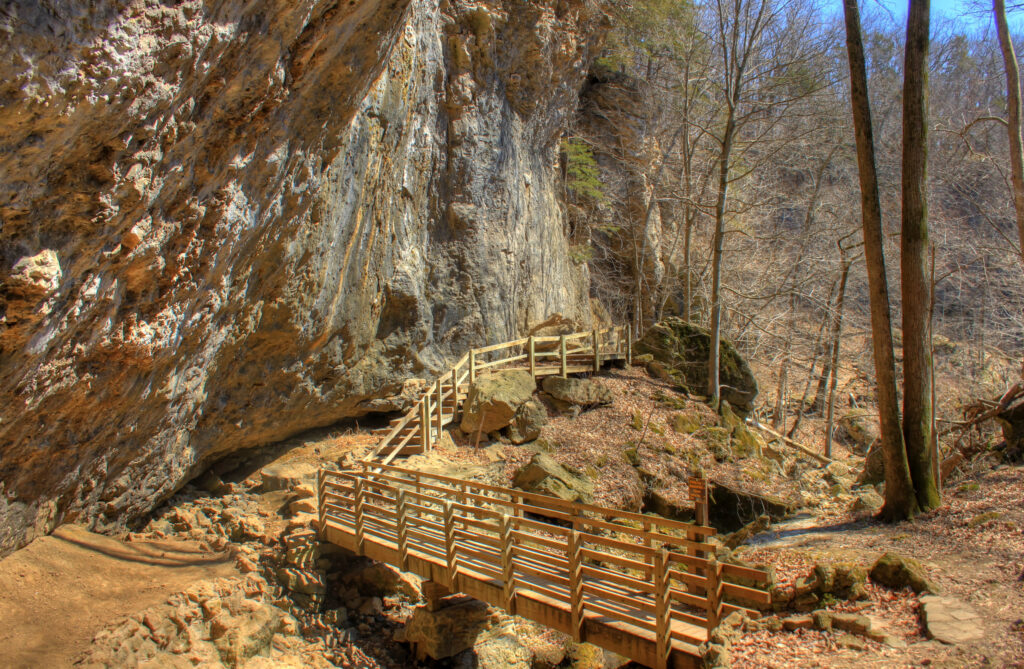
Tucked away in Jackson County, Iowa, Maquoketa Caves State Park is an outdoor adventurer’s dream. It’s home to more caves than any other state park in Iowa, along with a rugged landscape shaped by centuries of water and erosion. With rocky bluffs, natural bridges, and miles of trails, it’s a paradise for both mountaineers and spelunkers.
As you drive through the gentle farmland of eastern Iowa, the terrain shifts dramatically upon entering the Driftless Area. Here, steep cliffs and limestone formations break the horizon, signaling that you’ve entered a truly wild pocket of the Midwest.
Maquoketa Caves features about six miles of trails, winding through dense woods, over footbridges, and up steep wooden staircases. For the mountaineer seeking a mix of vertical challenge and immersive scenery, the terrain delivers, especially near the dramatic stone ridges and scenic overlooks.
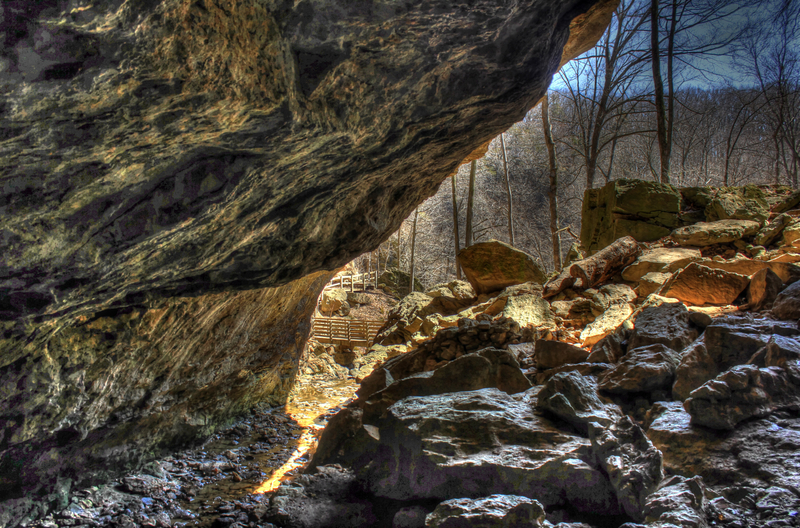
Cave Systems: From Crawlspaces to Cathedrals
This park is known for its extensive and varied cave systems:
- Dancehall Cave: Over 1,100 feet long, it’s the park’s largest and most accessible cave. A paved path and lighting make it an ideal entry point for new visitors.
- Wye, Up-N-Down, and Ice Caves: These offer more of a challenge, some requiring crawls, tight squeezes, or navigating through slippery underground streams.
- Rainy Day and Shinbone Cave: Often overlooked, these caves reward explorers with solitude and geological wonders.
Be prepared to get muddy and bring your own headlamp, as many caves are completely dark.
⚠️ What Mountaineers Should Know
- Footwear: Rugged shoes or boots with excellent traction are a must.
- Lighting: Bring a headlamp or flashlight (with backup batteries).
- Clothing: Quick-dry or moisture-wicking clothes are best; caves are cool and damp year-round.
- Safety: Many caves require crawling or scrambling; be aware of your limits.
- Conservation: Clean your gear to prevent the spread of white-nose syndrome among bats.
Highlights & Hidden Gems
- Natural Bridge: The largest in Iowa, this limestone span over Raccoon Creek is a geological marvel.
- Balanced Rock: A teetering boulder perched along the trail, one of the park’s iconic photo ops.
- Scenic Overlooks: High points along the ridge trails give sweeping views of the forest canopy and creek below.
Camping & Extended Trips
The park has a small campground with reservable sites, making it perfect for a weekend getaway. Staying overnight gives you time to explore the trails and cave systems at a relaxed pace, with time left to stargaze by the campfire. Regardless of how you choose to spend your time at the Mosquoketa State Park, make sure that you bring along these important items:
Final Thoughts
Maquoketa Caves State Park is where elevation meets exploration, above ground and below. Whether you’re navigating tight passageways or scaling forested ridgelines, it offers a rare adventure in the heart of Iowa. For mountaineers, it’s an unexpected gem that tests your agility, endurance, and sense of wonder.
2. Sand Cave (Illinois)
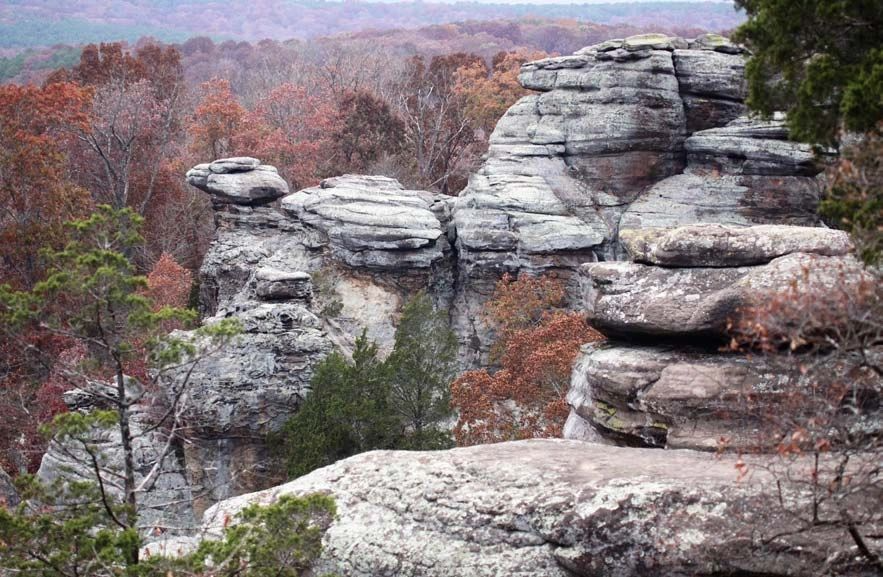
Tucked along a bluff within Shawnee National Forest in southern Illinois, Sand Cave beckons with its vast sandstone shelter. It boasts a mouth nearly 30 feet wide and is carved roughly 100 feet into the cliff face, making it one of North America’s largest exposed sandstone caves.
A Window Into History:
- Indigenous Roots: Once part of Illiniwek lands, the cave region reflects human presence dating back over 12,000 years.
- Underground Railroad Waypoint: The cave sheltered enslaved individuals journeying north, serving as a landmark along the path to freedom.
How to Get There
Located near Eddyville and Simpson, IL, there’s no official trailhead or signage. Instead, follow IL‑145 to IL‑147, then Cedar Grove Road to Sand Cave Lane, where a small roadside parking area leads to an ATV-style footpath. After roughly 0.5 mile, the trail forks, bearing right along the bluff brings you straight to the cave entrance. Follow left for a slightly longer but scenic route.
The Hike
- Length & Difficulty: A 1.2‑mile out‑and‑back with moderate footing. AllTrails rates it easy, though heavier mud from spring rains may demand caution
- Terrain: Bluff-edge path with rocky ground, occasional mud, and shallow depressions. Horse traffic can cause offshoots, so stay alert.
What You’ll Experience:

- Impressive Shelter: The cave itself is jaw-dropping, vast enough for shelter or shade, with a natural rock “stage” framed by a pool‑ring and central boulder.
- Pristine Wilderness: The Surrounding landscape includes horseshoe‑shaped cliff canyons, lush woodland vistas, and wild bluff ecosystems with minimal disturbance..
Tips for Your Visit
- Pack the Essentials: Sturdy shoes, plenty of water, snacks, and awareness of possible snakes, livestock, or loose horseshoes on the trail.
- Parking & Access: Only room for a few cars, park off-road. Cell coverage may be limited, download maps and inform someone of your plans.
- Best Time to Go: Late fall to early spring offers better trail visibility and fewer bugs; avoid heavy rain when the bluff and cave floor become slick
Quick Itinerary
- Start: Park at the end of Sand Cave Lane.
- Hike In (≈0.5 mi): Bluff-line trail → find fork.
- Explore Cave: Marvel at the immense shelter and rock formations.
- Extend: Continue along the cliff edge for scenic overlooks.
- Return: Retrace to the trailhead a total of approximately 1.2 miles.
Final Thoughts
Sand Cave offers a rare blend of dramatic sandstone architecture, deep-rooted history, and solace in solitude, all within an untouched fragment of Illinois wilderness. For hikers, history buffs, and nature seekers alike, this easily accessible yet wild escape is southern Illinois at its rawest and most evocative.
Ready to explore? Just lace up your boots, pack smart, and let the Shawnee’s sandstone corridor show its secrets.
3. Searcy Creek Caves (Missouri)
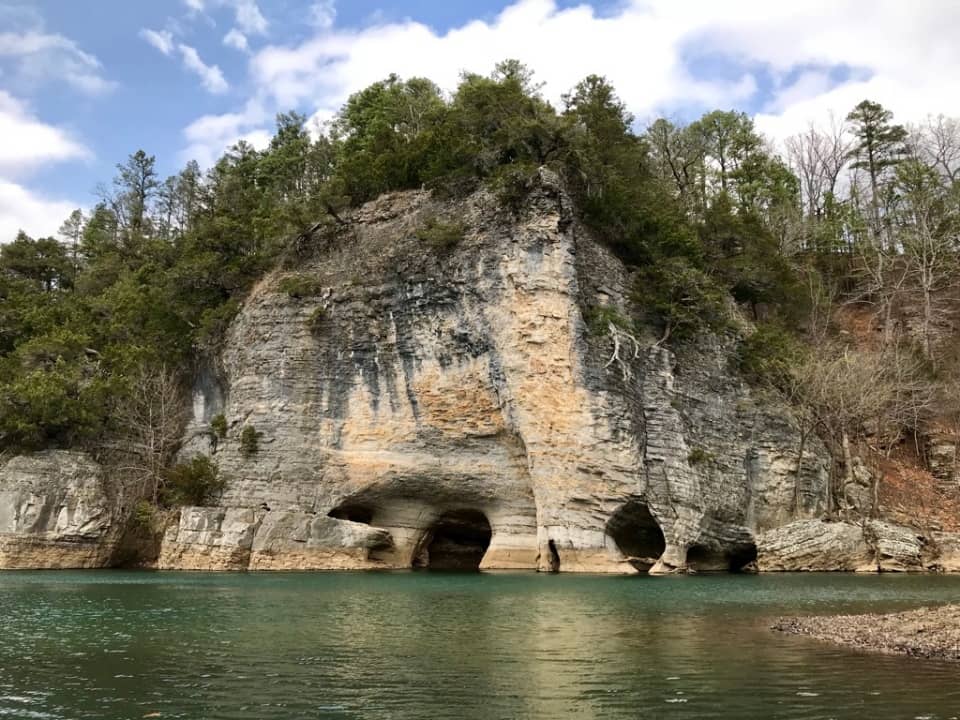
Deep in the wild hills of northern Arkansas lies a hidden sanctuary that merges geology, archaeology, and solitude: Searcy Creek Cave. Also known as Calf Creek Cave or Snowball Cave, this immense bluff shelter rests above the winding waters of Searcy Creek near the tiny town of Snowball in Searcy County.
A Portal to the Past
This is more than just a pretty rock formation. Searcy Creek Cave holds archaeological significance; it lent its name to the Calf Creek culture, an ancient group of hunter-gatherers who lived in the region between 7500 and 4000 years ago. The famous Calf Creek point, a distinctively crafted spearhead, was first found here.
Sadly, much of the site’s archaeological layers were disturbed or looted in the 20th century. Despite this, it remains an important cultural site that reflects the long history of human presence in the Ozarks.
Getting There
Reaching Searcy Creek Cave is an adventure in itself. Located near the Buffalo National River, the cave is accessed via rural roads and a short hike through the forested terrain. A GPS and offline maps are highly recommended, as there are no signs or official trail markers. From the unpaved road near Snowball, a footpath winds along the bluff line, revealing the massive cave opening carved into the sandstone cliff.
What You’ll Find
Searcy Creek Cave is a huge sandstone overhang, not a deep underground cavern. Its vast, cathedral-like roof stretches out nearly 100 feet, offering dry shelter and incredible views of the forest below. This natural amphitheater was formed over millennia by wind and water erosion and remains one of the Ozarks’ more dramatic hidden spaces.
Tips for Visiting
- Pack smart: Bring water, hiking boots, a physical map, and a reliable daypack, we recommend for your adventure.
- Leave no trace: This is a culturally sensitive area, please respect the space and avoid disturbing the cave or its surroundings.
- Best time to visit: Late fall to early spring avoids ticks and heavy underbrush.
- After the Cave: Freshen up with these eco-friendly travel wipes we love.
Must-haves for Cave Exploring #ad
- 🧭 Outdoor Gear: Ultra-Light Bright LED Rechargeable Headlight
- 🥾 What to Pack: Waterproof hiking boots
- 🌳 Local Advice: Mosquito Repellent Bracelets
- 📸 Capture It: Beginner-friendly travel camera with 16x Zoom
Final Thoughts
The Hidden Midwest is full of… well, hidden wonders. These caves prove that with a little curiosity (and a decent flashlight), your next unforgettable adventure doesn’t have to be expensive or even that far from home.
Tips for Visiting Midwest Caves Safely
- Always check local regulations. Some caves require permits or seasonal closures.
- Go with a buddy, these aren’t commercial caves, and cell reception can be spotty.
- Respect nature. Pack in, pack out.
So skip the lines, ditch the brochures, and go underground.
📩 Get the Itinerary
Subscribe below, and we’ll send you a free 3-day road trip plan that includes these caves, plus food stops and budget stays.

